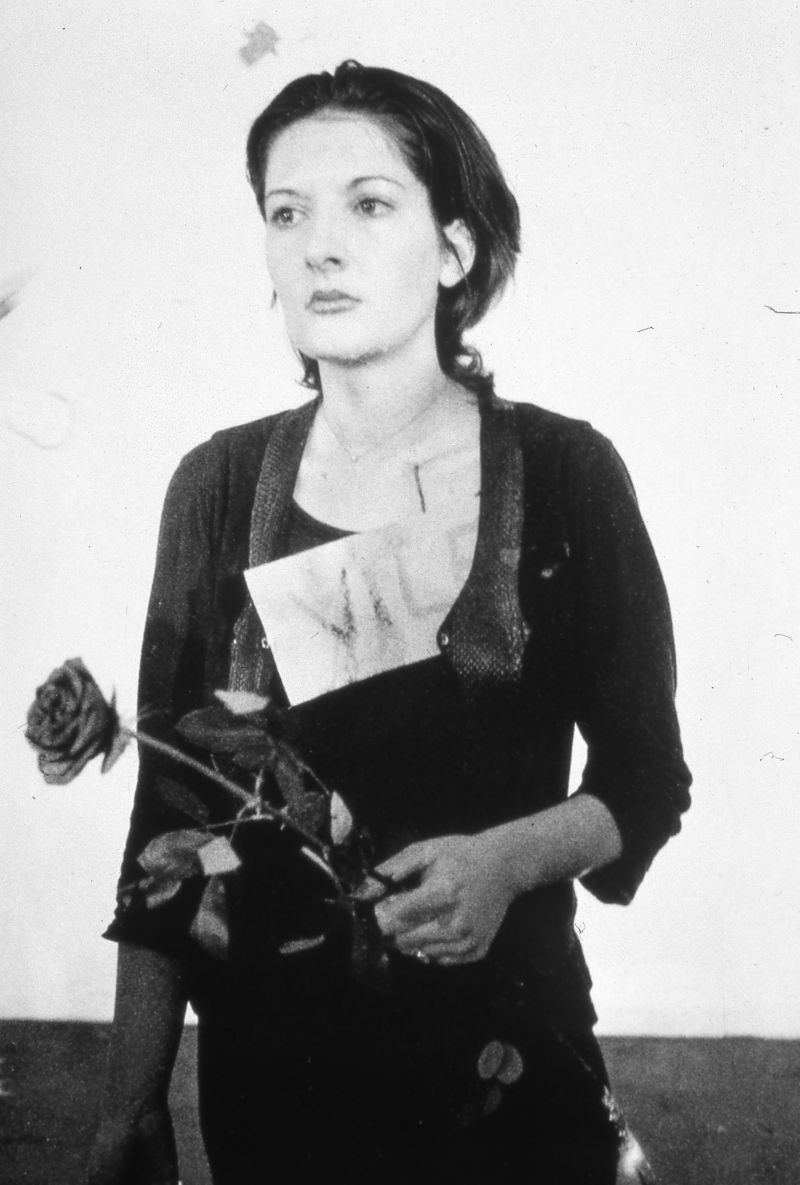
The Controversial Art Performance: A Tale of Alleged Assault and Safety

Exploring the challenges faced by performers in a controversial art performance and the allegations of sexual assault during the event.
The Artistic Setting
In the world of contemporary art, where boundaries are constantly pushed and norms are challenged, the intersection of nudity, stillness, and viewer interaction has sparked both fascination and controversy. One such instance is the reenactment of Marina Abramović's 'Imponderabilia,' a piece that invites visitors to pass through a narrow doorway between two fully nude performers, challenging societal perceptions of gender, sexuality, and the human body. This thought-provoking piece was part of the larger exhibition 'The Artist is Present' at New York's Museum of Modern Art (MoMA), celebrating Abramović's groundbreaking career in performance art.
"Rhythm 0" (1974) by Marina Abramović.
The setting for this performance art piece, while intended to provoke introspection and dialogue, has become the center of a legal battle, raising questions about the safety and protection of the performers involved. What was supposed to be a platform for artistic expression and engagement has now become a contentious issue, shining a light on the responsibilities of institutions and the well-being of the artists.
Allegations of Assault
Amidst the contemplative atmosphere of the exhibition, a disturbing narrative emerged as performer John Bonafede came forward with allegations of repeated sexual assault during the two-and-a-half-month run of 'The Artist is Present.' According to Bonafede, he and fellow performers were subjected to acts of assault by museumgoers, leading to a legal battle against MoMA for their alleged failure to protect the artists from harm.
The lawsuit filed by Bonafede paints a harrowing picture of the experiences endured by the performers, shedding light on the challenges they faced while engaging in the provocative art piece. The allegations have ignited a debate on the boundaries of artistic expression, the duty of care owed to performers, and the measures required to ensure a safe and respectful environment for artistic endeavors.
The Debate on Safety and Responsibility
The lawsuit not only calls attention to the alleged incidents of assault but also raises broader questions about the responsibilities of institutions and artists in fostering a secure environment for artistic expression. It prompts discussions on the need for proactive measures to safeguard performers, the ethical considerations of audience engagement, and the balance between artistic freedom and personal safety.
As the legal battle unfolds, it brings to the forefront the complexities of performance art, inviting contemplation on the intersection of vulnerability, artistic expression, and audience interaction. The case serves as a catalyst for conversations about the boundaries of creative exploration, the impact of institutional oversight, and the rights of artists to engage in provocative works without compromising their well-being.














